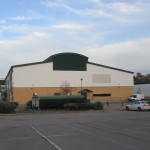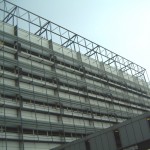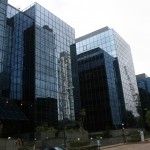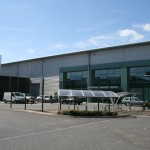 2013 was an exciting year in the London colocation market, with numerous new entrants and data centres appearing and these trends fit the theme of our recent industry presentations which have the key message of “Change and Choice”.
2013 was an exciting year in the London colocation market, with numerous new entrants and data centres appearing and these trends fit the theme of our recent industry presentations which have the key message of “Change and Choice”.
By “change” we are referring to the significant changes taking place in colocation industry structure, where our previous view of a three tiered structure (between wholesale, premium colocation and new entrants) has definitely broken down– for example we now have wholesale operators actively chasing retail colocation deals, as little as a single rack, whereas only a year or two ago they never would have considered such small scale clients as their model was focussed on large scale transactions, typically 5000 sq ft upwards, on a long term lease, ideally 10 years or more. This shift to retail is therefore a significant shift in emphasis and furthermore, given the size of wholesale facilities, represents a meaningful new source of supply for colocation users.
In the meantime, the scale and quality of the numerous new entrant data centres now available in and around London has pretty much made these offerings indistinguishable from facilities available elsewhere in the market.

Datum’s new Farnborough facility is a good example of the high quality “new entrant” sites now available in the London colocation market.
This leads onto the “choice” part of our London colocation market overview. The presentation slide I use showing all London colocation facilities, ie those in both central and outer London (the “M25”) is below and now shows no less than 45 carrier neutral colocation facilities available in and around London.
 So “change and choice” are the two key words that sum up our views on the current state of the London colocation market.
So “change and choice” are the two key words that sum up our views on the current state of the London colocation market.
Colocation choices in 2014 are whether to pay for an “ecosystem” or not
In terms of making some choices about which data centre or colocation providers to use, there are two key criteria to consider: to pay for a colocation ecosystem if you need one, or not.
If you need to access certain “ecosystems”, such as carrier or network hubs or “ultra low latency” locations to trade financial products then you will need to colocate in an appropriate ecosystem to do so. Good examples of ecosystems in the London data centre market would include Telehouse or Telecity Harbour Exchange (HEX), both located in London Docklands and excellent for network choice – for example 64% of all LINX (London Internet Exchange) ports in use are on the Telehouse campus, making it easily the busiest site for LINX. The other type of obvious ecosystem available in London is based on offering “ultra-low latency” for securities trading and Equinix’s LD4 facility in Slough is an excellent example, especially for equities traders seeking to connect to the BATS Chi-X platform, Europe’s largest equities exchange. LD4 also has a quite a growing market for forex – foreign exchange or currency trading.

 Telehouse North (left) and Telecity Harbour Exchange (right) are two obvious “network ecoystems” in the London colocation market.
Telehouse North (left) and Telecity Harbour Exchange (right) are two obvious “network ecoystems” in the London colocation market.
London Colocation pricing now ranges from £800 to nearly £2000 per cabinet per month
Expect to pay rack pricing in “premium” ecosystems that starts in the range of GBP£1500-GBP£2000 per rack per month for a 4kW footprint (including power usage) – a price certainly worth paying if you need to access any of these ecosystems, in fact it’s a “no brainer”! On the other hand, if your needs are more general, perhaps only needing a decent and reliable Internet connection to your colocation racks, then your choice today is any of the 45 facilities in and around London at costs which are at least half those of the more expensive ecosystem focussed facilities and operators. Rack pricing in these more “generalist” colocation facilities depends to a degree on location, with the best deals available in the regional “M25” market, locations such as Reading or Slough, where rack pricing for a 4kW cabinet ranges from GBP£800-GBP£1250 per month (including power used). In central London, away from the specialist ecosystems, pricing is generally above GBP£1000 per month and probably closer to GBP£1250-£1350 per month for a 4kW cabinet.
With such huge difference in costs making the right choices has never been more important – but this is a decision making process that really is still quite a new concept for London colocation users, given that the quality and quantity of data centres and operators around London has simply grown so much over the past five or six years and in particular, away from the original cluster based in London Docklands. Having visited pretty much all of the 45 facilities of course Colo-X is very well placed to offer advice on suitability, costs or the range of options, so please do contact us to discuss any London colocation requirement you may be considering.
Excellent outlook in 2014 for London Colocation Users
With the UK economy having surprised on the upside in 2013 and forecast to produce a further strong recovery of 2.5% GDP growth in 2014 (indeed the UK’s GDP is finally meant to surpass the 2008 peak come mid-year 2014) the demand side of the UK data centre market should pick up after a fairly lacklustre couple of years. One oft-noted comment I’ve read is that the improvement in the economy over 2013 has been very “consumer led” and many experts are now predicting that 2014 should see this improving confidence finally force the corporate sector out of a long period of cautious expansion and investment. This bodes well for the numerous new data centre facilities and colocation providers.
Our view remains that with so much new capacity having been brought onto the market over the past few years as well as a vast stock of “potential capacity”, that is space which though not fitted out now can readily be brought into production (for example consider the “phased” delivery of all new data centres these days). This means that increasing demand is unlikely for the foreseeable future, certainly the next couple of years, to lead to surging colocation prices. This has to be good news for colocation buyers and indeed buyers in London face a truly wide choice these days with so many new locations, new operators and range of facilities now available.
Market changes mean vendors must be “value” focussed
Even the high value but expensive “ecosystems” now need to be aware of the change in market dynamics; if their charges get too far removed from the generalist market buyers will think more carefully about keeping to the bare minimum the amount of equipment they install in these sites.
Elsewhere colocation itself faces competition from alternative options, for example the growing adoption of cloud. To be fair, hearing Amazon present at IPExpo last year, even they estimate the vast majority of their users are so called “hybrid” users, ie still using their own hardware or platforms and using services like Amazon for “swing or flex capacity” or short term “batch” requirements. Funnily enough at Colo-X in the last quarter of 2013 we noticed an increase in smaller SME customers moving away from some of the large cloud providers due to concerns about data protection (mostly jurisdictional issues), uncertain service levels and indeed the self-service model of many cloud providers – most of these clients were interested in some form of dedicated hardware.
We agree with the consensus that cloud is forecast to grow massively, meaning the colocation industry needs to remain focussed on the value proposition, even if demand were to pleasantly surprise in 2014. With highly flexible terms for colocation users now available in the market (and to give credit where it’s due, Virtus’s “colo on demand” product is a good example of what’s available these days, ie pay as you use it) de-risking colocation as a solution is a great way to reduce barriers to entry, especially if a colocation contract can offer the same sort of flexibility that a “cloud based” solution can.

Virtus Enfield is a good example of a former “wholesale” focussed operator now offering highly flexible terms to attract direct retail customers
Next Steps
If you are looking at a colocation or data centre requirement in 2014 please do get in touch with us to discuss the various options available to you. In a quick phone call we are usually able to tell you the facilities and operators best placed to meet your needs and give you some ideas, there and then, as to likely costs.
For more facts and details on the entire UK Carrier Neutral Colocation Industry, including our analysis on the structural changes taking place, please read details of our 50 page report “UK Colocation Industry, Structural Changes and Trends” released in Q4 2013. Details can be found here. Please contact us for pricing and delivery options.
Click here to download a pdf version of this article.